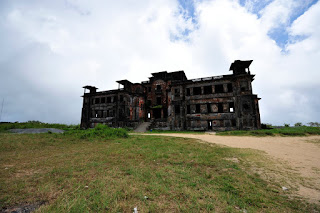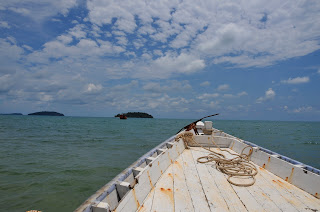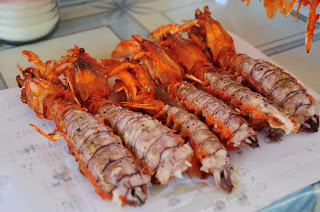

Saigon/Ho Chi Minh city. You choose. I chose Saigon, I think I'm quite old fashioned. I still call Indian cities by their colonial name, Bombay, Calcutta and Benares; Myanmar for me is still Burma. I do not mean to be disrespectful towards the locals, but I discovered these places with Kipling and Orwell, so I'll use the names they use. Plus Rangoon sounds way more evocative than Yangon, Madras is a much nicer name than Chennai. Saigon is rather different, it's been the city's name for centuries, until the end of the war and Reunification. So what a better place to name after the fallen Uncle Ho than the centrepoint of American resistance? Unfortunately, Ho didn't live to see the day. Altough Vietnam's capital is officially Hanoi (anybody familiar with recent history will know why), Saigon is the commercial centre, the largest and liveliest city.

I loved Saigon instantly. I have a fondness for Asian cities; I love the street carts, the atmosphere, the Buddhist and Chinese temple. I love the energy, the sense of being 'on the move'. Saigon was a good example; it doesn't have many sights as such, but it's just nice to be there. Try crossing the road, for example. A sea of bicycles, cyclos, motorbikes and the odd car is between you and the other side. A current that gives no sign of stopping or even easing. Plus, no traffic light. How do you do it? Slowly, step by step, steadily. What a metaphor for life and seemingly unachievable tasks. When something looks as daunting as a Vietnamese road, just take the first step and keep going. The first step is the hardest, once you've started, you're halfway there.


Most sights in Saigon are war or Revolution related. We visited the Reunification Palace, the former presidential palace who was stormed by Vietcong on the day Saigon fell. The palace itself was nothing spectacular, a rather nondescript building with 60s furniture, but it was interesting to see how the basement was used as headquarters for the South Vietnamese intelligence. The War Remnants Museum was another story. It used to be called American War Crimes museum, giving an idea of the exhibits. There were pictures of napalm and Agent Orange victims, wounded soldiers and civilians, the devastation of the war. What impressed me mostly was an account of how Agent Orange, the defoliant used plentifully be the American army, has caused birth defects for years after the war was over. Pictures of children and young adults with crooked or missing limbs, cleft palate or other facial deformations covered a whole wall. There were even two foetuses in formaldehyde; one of Siamese twins, one with a head deformation. I left shaking. I was also shocked by the images of the My Lai massacre, the murder of a whole village by the hand of American soldiers. Nearly 500 children, women and elders were killed; accused of being VC supporters. Sarcastically, the following quote from the US declaration of independence was displayed nearby
"we hold these truths to be self-evident, that all men are created equal, that they are endowed by their Creator with certain unalienable rights, that among these are Life, Liberty and the Pursuit for Happiness"


On a lighter note, my time in Saigon will also be inextricably linked to the discovery of two new flavours; pho and bia hoi. Pho is the quintessential Vietnamese soup; half cooked beef in a rich broth, with rice noodles and a variety of ingredients that can be added at will, such as beansprouts, mint leaves, various tangy and bitter green leaves, chilli and plum sauce, plus a squeeze of lime juice. Rich and nourishing, perhaps the best soup after Penang. Bia hoi, on the other hand... will probably remain as my memory of Vietnam. Roughly translated as 'fresh beer', bia hoi are microbreweries, offering jugs of draught beer for 12.000 dong (less than 50 euro cent). Tables are bunched up together on the pavement; conversations inevitably flourish. The people watching was my favourite activity. From my streetside seat I saw an endless procession of cyclos, streetvendors selling anything from sunglasses to mangosteens, American veterans that came during the war and stayed. A reclined my plastic stool and enjoyed the show; a snapshot of life in Saigon, or Ho Chi Minh City.



























